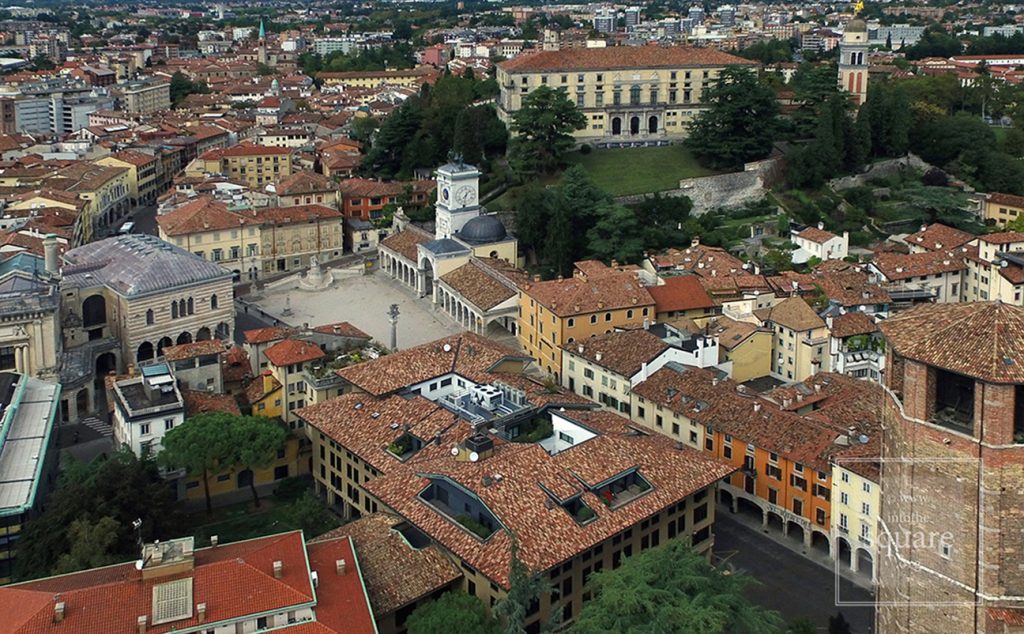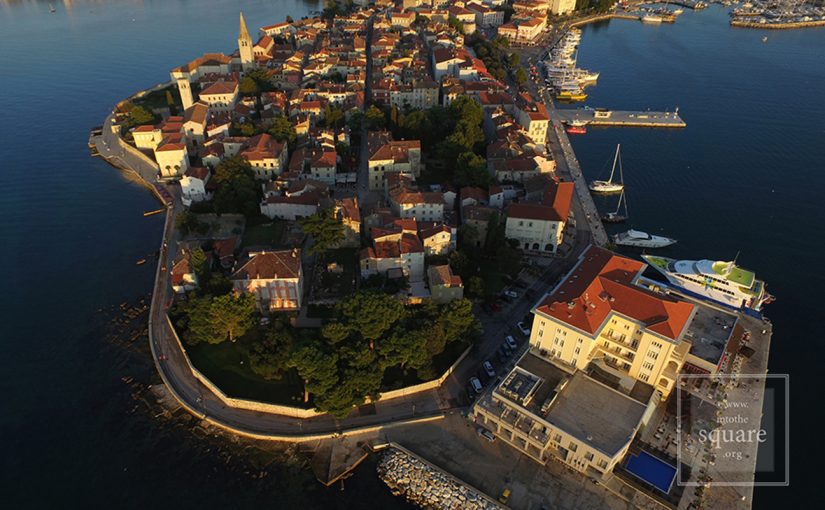Η πόλη ιδρύθηκε στα τέλη του 13ου αιώνα. Η πλατεία, με σχεδόν ίσες πλευρές, συγκεντρώνει κτίρια σε πολύ διαφορετικά στυλ. Θεωρήθηκε η πιο όμορφη πλατεία βόρεια των Άλπεων και περιβάλλεται από όλες τις πλευρές με αψίδες, των οποίων η κατασκευή αρχίζει το 1503, μετά από μια μεγάλη φωτιά, η οποία καταστρέφει τα προηγούμενα σπίτια, όλα κυρίως ξύλινα. Ο σκοπός των αψίδων ήταν να στεγαστούν οι πάγκοι των εμπόρων και να ενταχθούν στην είσοδο του σπιτιού το mazhaus, όνομα που πήραν οι μεγάλοι χώροι στο ισόγειο. Άλλες πυρκαγιές επηρεάσαν την αγορά το 1768 και 1773, με τις προσόψεις να αποκαθίστανται στο ιστορικιστικό και νεοκλασικό στυλ τον 19ο αιώνα. Στη μέση της πλατείας μπορεί κανείς να δει μια θαυμάσια στήλη πανώλης, που ανεγέρθη στην μνήμη της πανώλης του 1680. Επίσης υπάρχει εδώ, ένα άγαλμα του Αγίου Νικολάου, προστάτη των παιδιών αλλά και του εμπορίου, και ένα σιντριβάνι με το παρατσούκλι “The Time” , επειδή οι κινήσεις του νερού συγχρονίζονται με το ρολόι στο κτίριο του δημαρχείου. Το Nový Jičín έχει το παλαιότερο εργοστάσιο καπέλων στην Ευρώπη και για το λόγο αυτό ένα κτίριο στην πλατεία στεγάζει ένα μουσείο καπέλων.













































